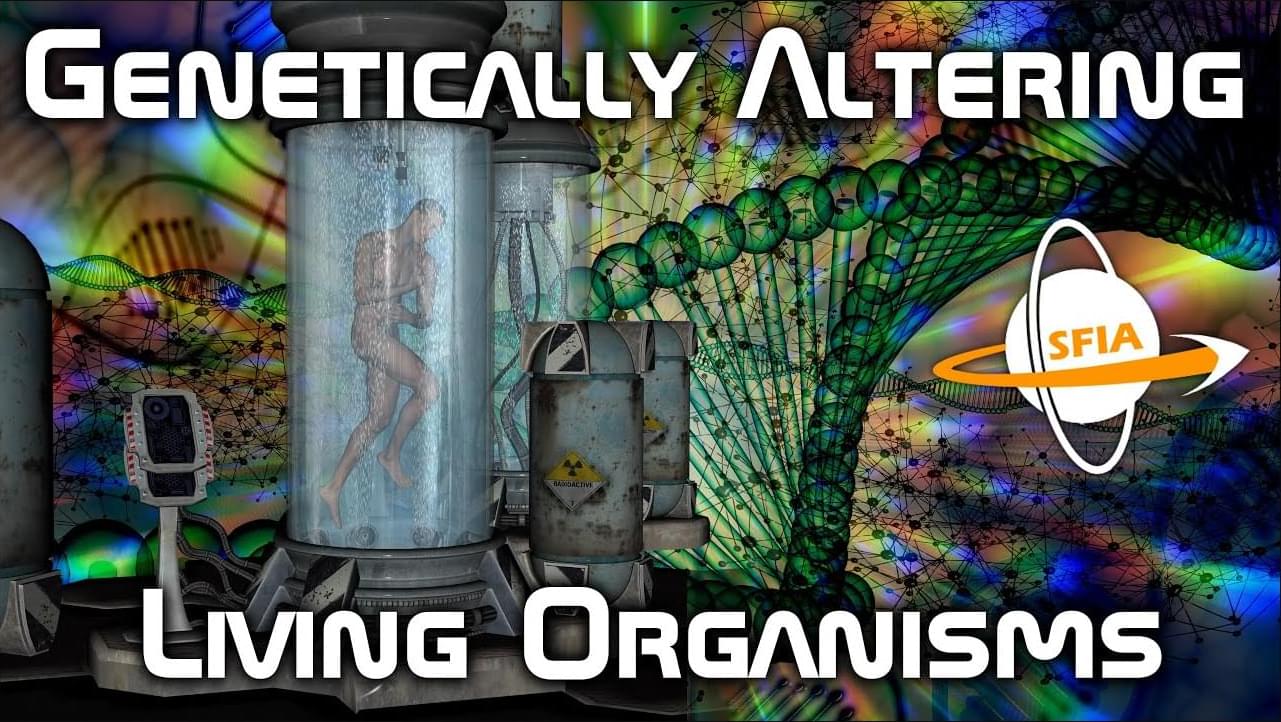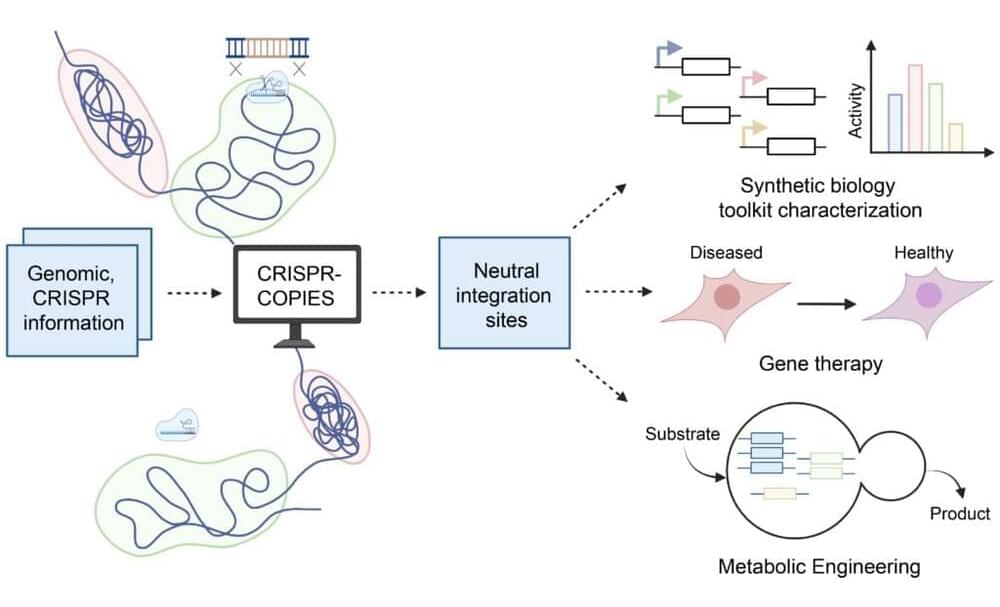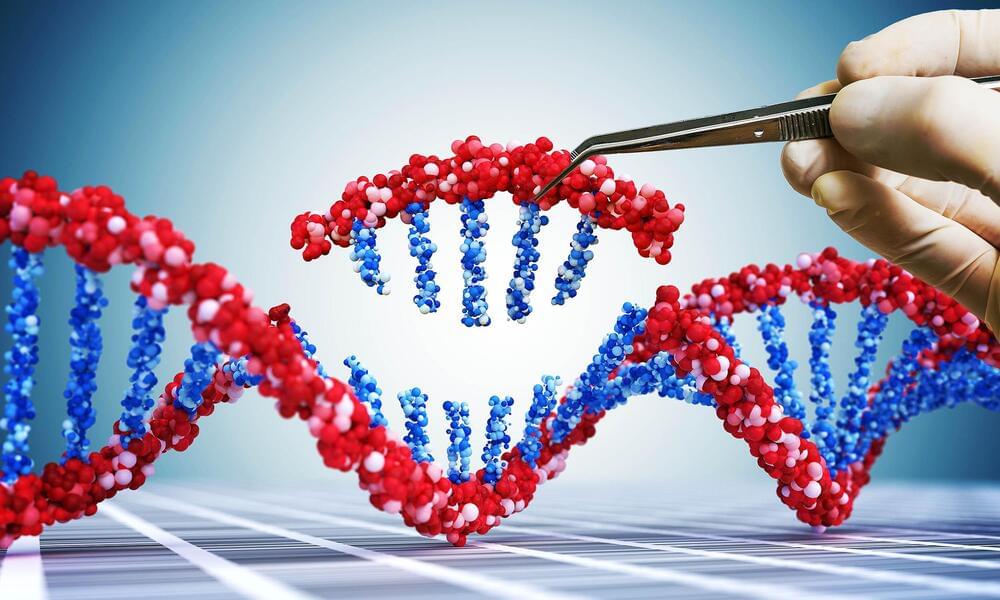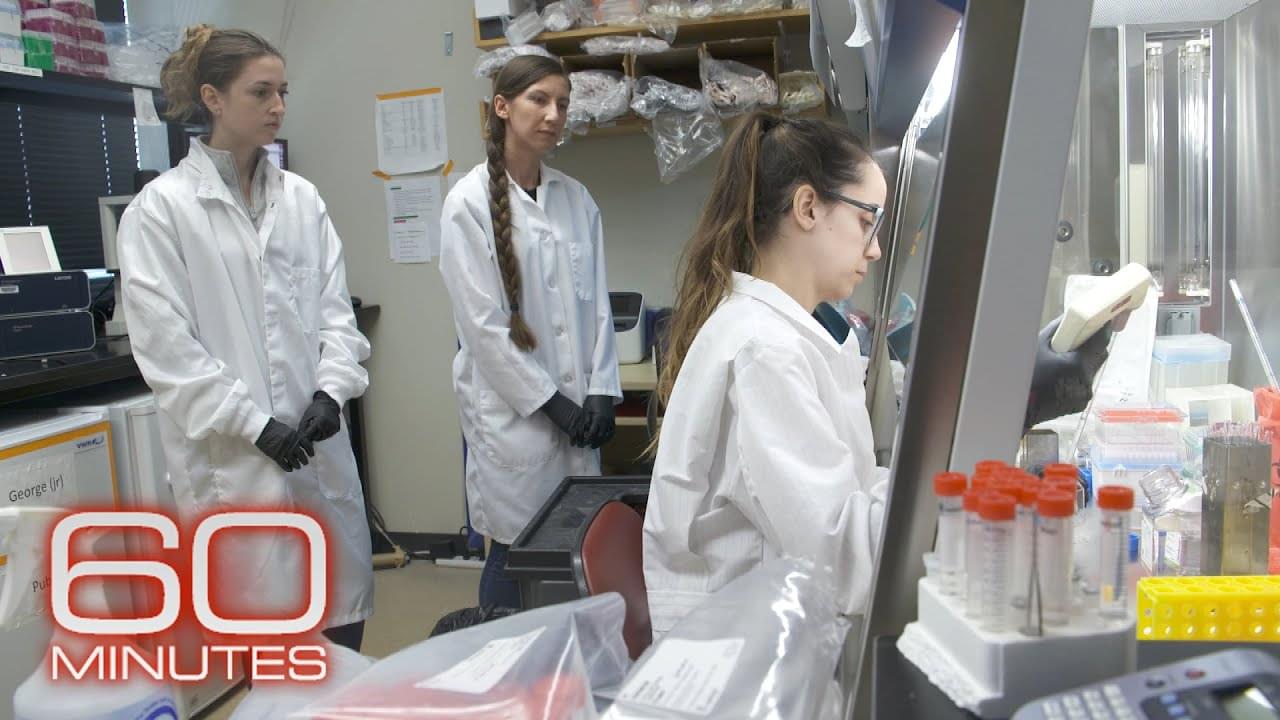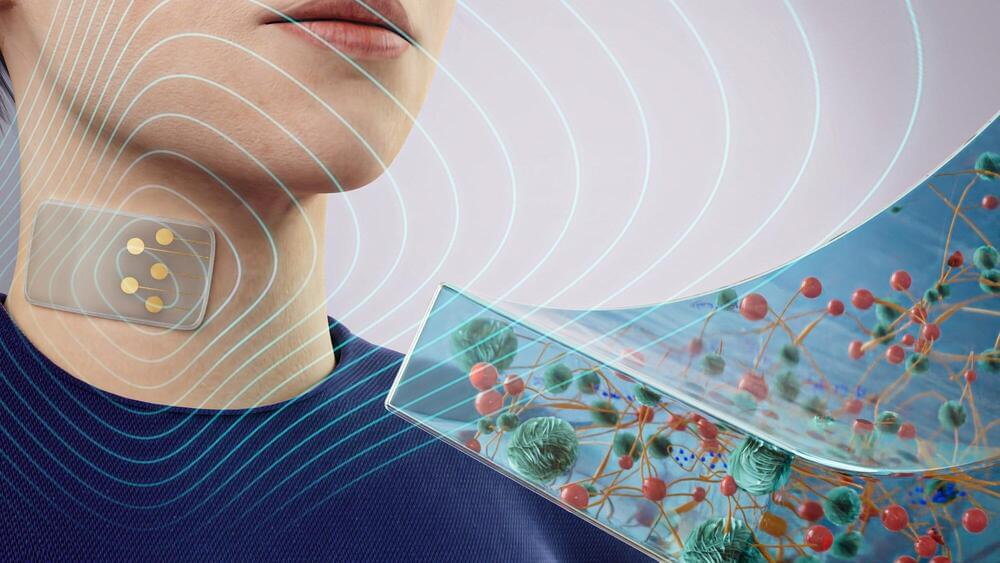Feb 20, 2024
Junk DNA in birds may hold key to safe, efficient gene therapy
Posted by Dan Breeden in categories: bioengineering, biotech/medical
The recent approval of a CRISPR-Cas9 therapy for sickle cell disease demonstrates that gene editing tools can do a superb job of knocking out genes to cure hereditary disease. But it’s still not possible to insert whole genes into the human genome to substitute for defective or deleterious genes.
A new technique that employs a retrotransposon from birds to insert genes into the genome holds more promise for gene therapy, since it inserts genes into a “safe harbor” in the human genome where the insertion won’t disrupt essential genes or lead to cancer.
Retrotransposons, or retroelements, are pieces of DNA that, when transcribed to RNA, code for enzymes that copy RNA back into DNA in the genome—a self-serving cycle that clutters the genome with retrotransposon DNA. About 40% of the human genome is made up of this “selfish” new DNA, though most of the genes are disabled, so-called junk DNA.

